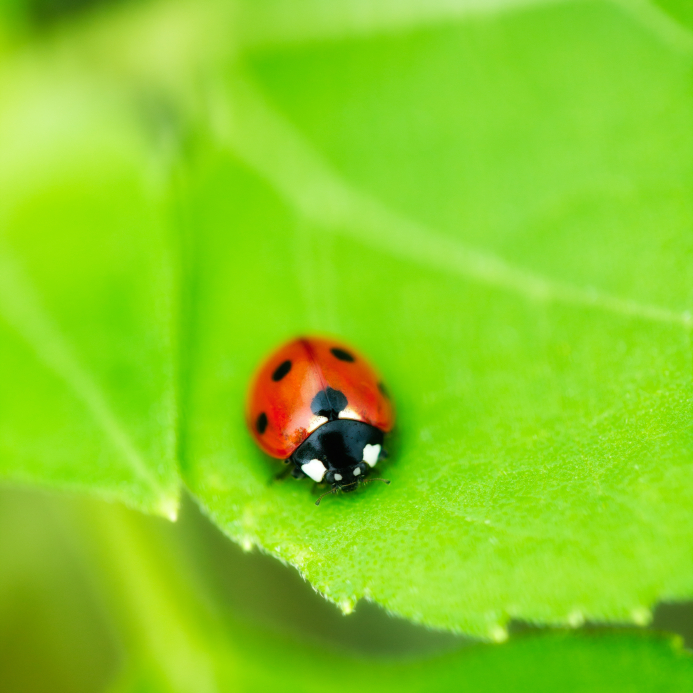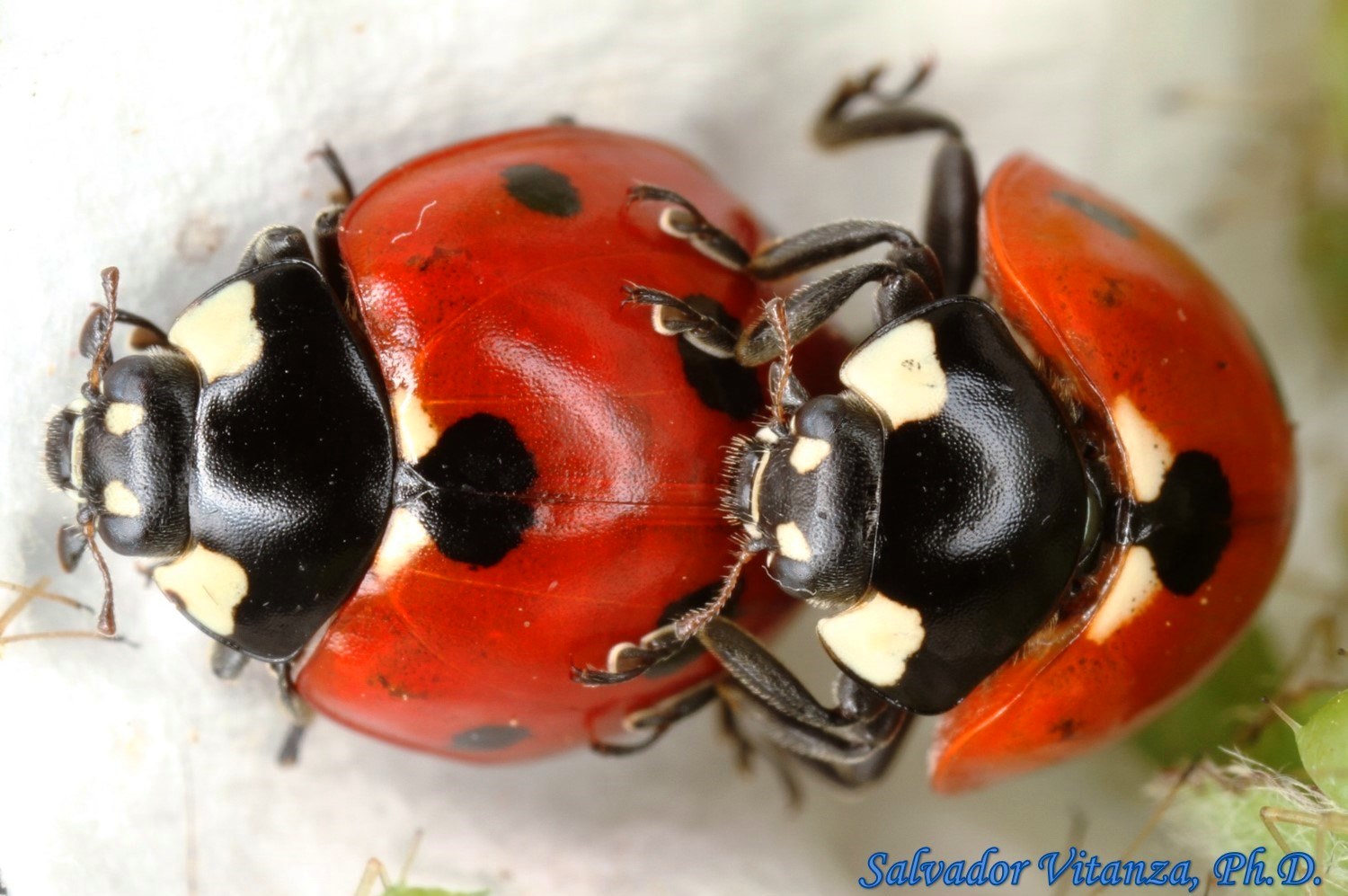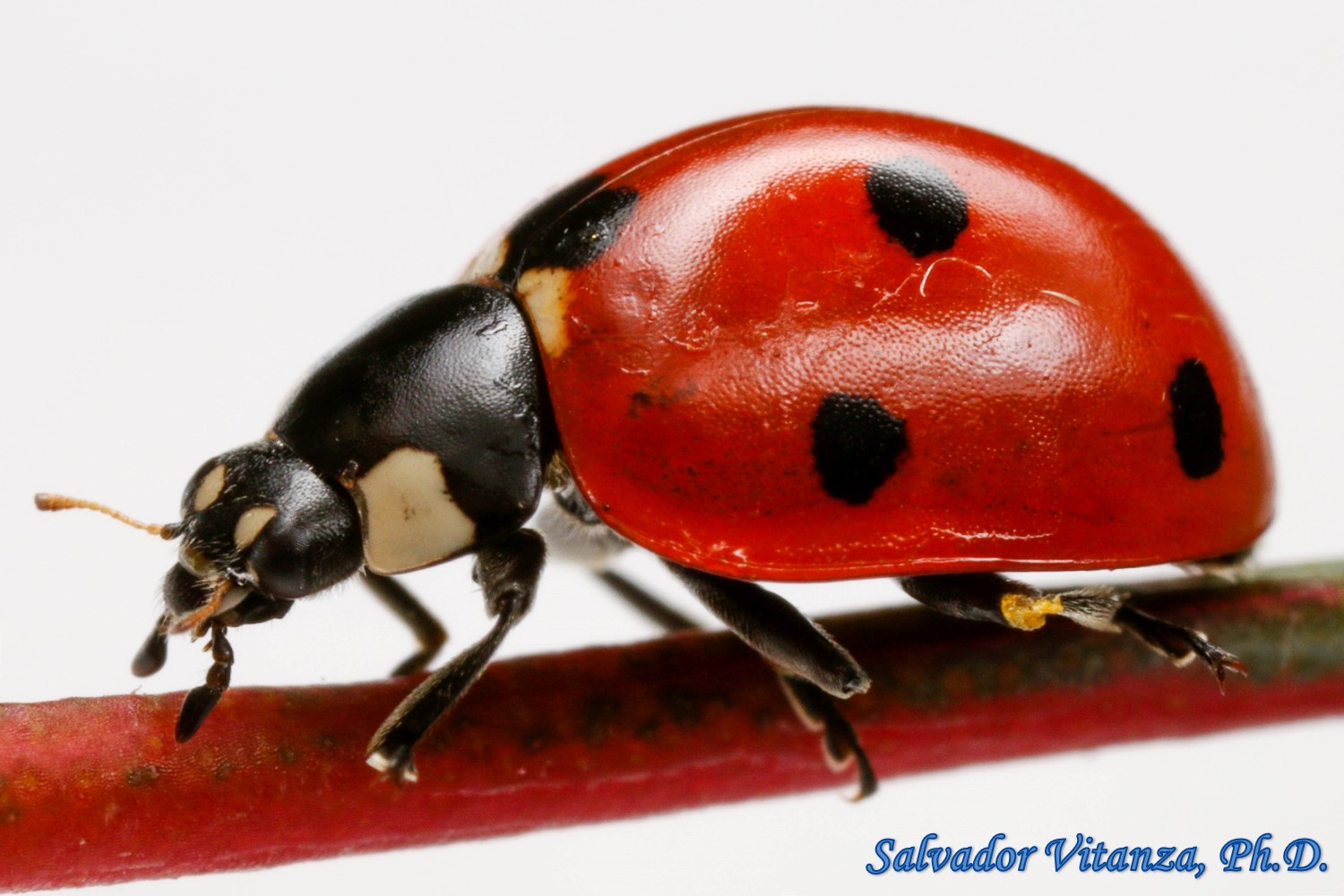

septempunctata increased greatly, while populations of C. Subsequent sampling in alfalfa over the next two decades revealed that populations of C. septempunctata were both rare members of the alfalfa lady beetle community.

Sweep sampling in the late 1980s and early 1990s demonstated that C. Alfalfa fields have served as a major habitat for C.

novemnotata in the intermountain region of western North America following the establishment of C. Here results of sampling diverse habitats over three decades are examined to address the fate of C. Coccinella novemnotata Herbst in particular has been hypothesized to be at great risk, as this species apparently dwindled in numbers across much of North America during the twentieth century. has generated widespread concern over potentially adverse effects on population viability of native species of ladybird beetles (Coccinellidae). The spectacular colonization of North America in recent decades by Coccinella septempunctata L. Species invading new geographic regions may threaten continued existence of similar, indigenous relatives, particularly those species whose rarity may reflect an already tenuous existence. Department of Biology, Utah State University, Logan, UT, United States.The findings obtained have practical ramifications for managing this economically important pest in wheat production with reduced insecticide applications. miscanthi might also alter to winged morphs for dispersal under both of the above treatments. miscanthi might reduce their fitness in response to the predation risk of caged prey. miscanthi could respond to the predation risk of the caged predator by either accelerating the developmental rate or reducing the net reproductive rate, while S. Furthermore, the predation risk of both the caged predator and caged prey could increase the percent of winged morph at 24 h. However, the predation risk of the caged prey resulted in the prolongation of the pre-adult development time and total pre-reproductive period (TPRP) as well as lowered the intrinsic rate of increase (r), finite rate of increase (𝜆), R₀, life expectancy, and reproductive value of S.

miscanthi at 12 h, and the first nymphal duration, preadult duration, and mean generation time (T) at 24 h. The results indicated that the predation risk of a caged predator could reduce the first nymphal duration and net reproductive rate (R₀) of S. We herein employed the age-stage, two-sex life table to examine the NCEs of the predator Coccinella septempunctata on the life-history traits and population growth of prey Sitobion miscanthi via caged predator (prey co-existing with caged predator) and caged prey (predator co-existing with caged prey) treatments with daily different exposure times (i.e., 0 h (control), 12 h, and 24 h). ISSN: 2075-4450 Subject: Coccinella septempunctata, Sitobion, fecundity, insecticides, life history, life tables, longevity, pests, population growth, predation, risk, wheat Abstract: How the non-consumptive effects (NCEs) of predators influence the development, survival, fecundity, and population growth of prey has not been well documented, which is the primary consideration for the compatibility of prey with its natural enemies in agricultural ecosystems. Assessment of Non-Consumptive Predation Risk of Coccinella septempunctata (Coleoptera: Coccinellidae) on the Population Growth of Sitobion miscanthi (Hemiptera: Aphididae) Author: Liping Wang, Remzi Atlihan, Ruirui Chai, Yao Dong, Chen Luo, Zuqing Hu Source: Insects 2022 v.13 no.6 pp.


 0 kommentar(er)
0 kommentar(er)
